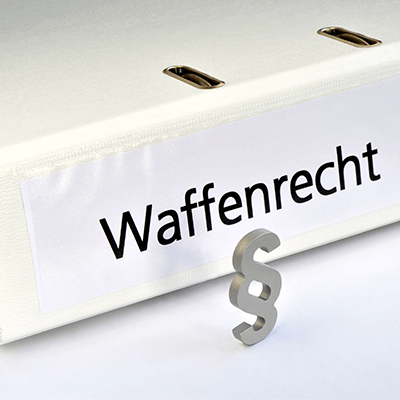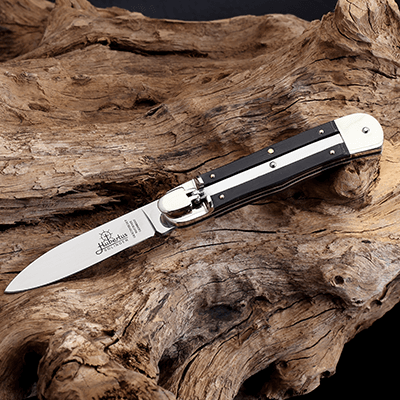Waffengesetz Messer 2024 – Alle aktuellen Regeln und Verbote
The Gun Law Knife in Deutschland ist seit der Verschärfung zum 31. Oktober 2024 deutlich strenger geworden. Messer gelten zwar oft als alltägliche Werkzeuge, können aber auch als Waffen missbraucht werden. Deshalb ist genau geregelt, welche Messer verboten, welche nur unter bestimmten Bedingungen geführt werden dürfen und welche Messer in Deutschland legal sind.
In diesem Leitfaden erfährst du alles Wichtige über das Messerrecht in Deutschland: Besitzverbote, Führungsverbote, neue Regelungen für Messerverbotszonen, das Mitführen in öffentlichen Verkehrsmitteln sowie die aktuellen Ausnahmen.

Waffengesetz Messer: Besitzverbote
Bestimmte Messer sind nach deutschem Waffengesetz komplett verboten – ihr Besitz und Führen ist strafbar. Dazu gehören:
-
Butterflymesser (Balisong)
-
Drop knife (Ausnahmen nur für Polizei, Zoll und Bundeswehr)
-
Fist knife (Ausnahme für Jäger und Pelzverarbeiter im Beruf)
-
Springmesser (automatische Messer) – seit 31.10.2024 generell verboten, Ausnahmen nur bei berechtigtem Interesse (z. B. körperliche Einschränkung, Beruf, Jagd, Handwerk)
-
Tarnmesser / Anscheinswaffen (z. B. Gürtelschnallenmesser, Klingen im Spazierstock)
-
Alle Messer für Minderjährige – Kauf und Besitz ab 18 Jahren
Führungsverbot nach dem Waffengesetz für Messer
Auch wenn der Besitz legal ist, dürfen bestimmte Messer in der Öffentlichkeit nicht geführt werden (§ 42a WaffG):
-
Einhändig feststellbare Messer (Einhandmesser)
-
Feststehende Messer mit einer Klingenlänge über 12 cm
Ein Führen ist nur erlaubt, wenn ein berechtigtes Interesse vorliegt, etwa im Beruf, bei Sport, Jagd oder Brauchtumspflege.

Neue Vorschriften seit 31. Oktober 2024
Messerverbote auf öffentlichen Veranstaltungen (§ 42 WaffG)
Seit der Reform 2024 ist das Führen von Messern bei Veranstaltungen (z. B. Volksfeste, Konzerte, Messen, Theater) grundsätzlich untersagt – unabhängig von Klingenlänge oder Bauart.
Messerverbotszonen (§ 42c WaffG)
Die Länder können spezielle Messerverbotszonen einrichten, etwa an Schulen, Bahnhöfen oder öffentlichen Plätzen. Dort sind Messer über 4 cm meist verboten. Erlaubt sind in der Regel nur kleine Taschenmesser ohne Arretierung (z. B. Schweizer Taschenmesser).
Öffentlicher Personenfernverkehr (§ 42b WaffG)
The Mitführen von Messern in Zügen, Bussen, Bahnhöfen und Wartebereichen ist seit 2024 untersagt. Zulässig bleibt der Transport, wenn das Messer nicht zugriffsbereit ist (z. B. im verschlossenen Behältnis oder tief im Rucksack).
Special Ban on leadership in the Gun prohibition zones according to the new law
Die letzte Änderung des Waffengesetzes ist am 31.10.2024 in Kraft getreten. Nachdem zuerst die Rede von einem absolutem Waffenverbot war, wurde nach starken Protesten davon abgesehen. Unter anderem, weil in vielen Berufen die Notwendigkeit besteht, ein Messer mit sich zu führen, da es für die Ausübung der Tätigkeit unabdingbar ist. Dadurch würde es allerdings gegen das geplante Gesetz verstoßen. So wurde die Idee von einem Totalverbot wieder verworfen und das Gesetz überarbeitet. Die Neuerungen beinhalten neue Vorschriften für Gun Prohibition Zones, in which a separate weapon law applies. Also was in the old weapon law there was talk of exceptions to the use of weapons. However, these were only described very imprecisely. The new weapons law has now specifically defined these exceptions. So you can refer explicitly to the law and are no longer exposed to the arbitrariness of the person responsible.
What exactly is it now allowed in the Gun Prohibition Zones?
Waffenverbotszonen sind Gebiete wie Schulen oder öffentliche Plätze wie Bahnhöfe. Die Landesregierungen können nun durch Rechtsverordnung das Führen von Messern in diesen Gebieten verbieten oder einschränken. In diesen Waffenverbotszonen können Personen jederzeit kontrolliert werden. Die Regelungen und Ausnahmen für das Führen von Messern innerhalb einer Waffenverbotszone können regional unterschiedlich sein. Erlaubt sind in der Regel nur Messer mit einer Klingenlänge von weniger als 4 cm sowie Taschenmesser ohne feststellbare Klinge. Ein Beispiel hierfür ist das Schweizer Taschenmesser. Alle Messer, die diese Anforderungen nicht erfüllen, dürfen in einer Waffenverbotszone nicht mitgeführt werden.
Übersicht: Waffengesetz Messer 2024 auf einen Blick
| category | Besitz | Führen (öffentlich) |
|---|---|---|
| Butterflymesser, Fallmesser, Faustmesser, Springmesser, Tarnmesser | Verboten | — |
| Einhandmesser, feststehende Messer >12 cm | Erlaubt (ab 18 J.) | Nur mit berechtigtem Interesse |
| Öffentliche Veranstaltungen | Besitz erlaubt | Führen verboten |
| Messerverbotszonen & ÖPNV | Besitz teils erlaubt | Führen verboten (Ausnahmen möglich) |
| Transport nicht zugriffsbereit | Erlaubt | Erlaubt |
FAQ – Häufige Fragen zum Waffengesetz Messer
Welche Messer sind in Deutschland verboten?
Butterflymesser, Fallmesser, Faustmesser, Springmesser und Tarnmesser.
Darf ich ein Taschenmesser mitführen?
Ja, solange die Klinge nicht feststellbar ist und die Klingenlänge unter 12 cm liegt (außerhalb von Verbotszonen).
Ab wann darf man Messer kaufen?
In Deutschland ist der Erwerb von Messern grundsätzlich erst ab 18 Jahren erlaubt.
Was bedeutet „nicht zugriffsbereit“?
Ein Messer gilt als nicht zugriffsbereit, wenn es mehr als drei Handgriffe benötigt, um es einsatzfähig zu machen.
Fazit zum Waffengesetz Messer
The Waffengesetz für Messer in Deutschland unterscheidet klar zwischen Besitz, Führen und Transport. Mit den Änderungen vom 31. Oktober 2024 gelten strengere Regeln: Messerverbote in Veranstaltungen, Verbotszonen und im öffentlichen Fernverkehr. Wer Messer legal nutzen will, muss die neuen Vorschriften genau kennen – sonst drohen empfindliche Strafen.
Legal situation in other countries
Of course, different legal framework conditions apply in other countries in Europe and the world. For deliveries to buyers outside of Germany, other country-specific restrictions or bans on certain items may therefore apply. The buyer is responsible for ensuring that the import and possession of the items he has ordered do not violate the legal provisions of his home country. Unfortunately, we cannot know, explain and interpret all of the large number of different laws in different countries.
legal advice
We would also like to point out that this summary is for non-binding information purposes only and does not constitute legal advice in the strict sense. Individual and binding legal advice that addresses your specific situation cannot and should not replace it. All information provided is therefore without guarantee of correctness and completeness.
Für weitere Informationen und detaillierte Ausführungen empfehlen wir, die offiziellen Gesetzestexte zu konsultieren oder rechtlichen Rat einzuholen.








